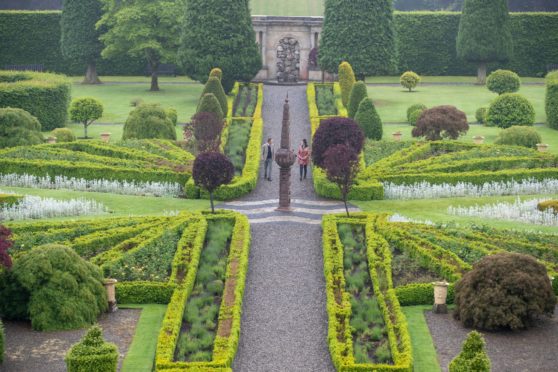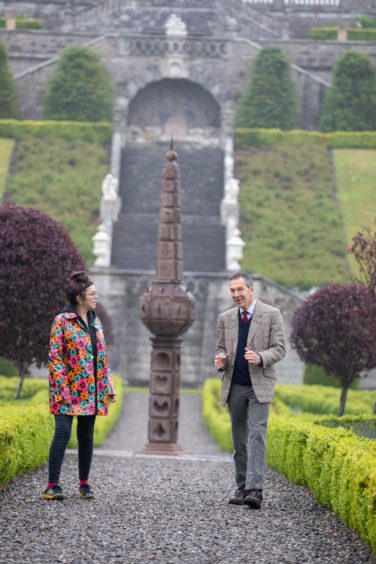An ancient sundial, the earliest example of its kind in Scotland, has returned to its Perthshire home.
The 17th century obelisk was put back in place at Drummond Castle Gardens after two years of painstaking restoration.
Installed in 1630, the sundial has endured nearly 400 years of Scottish weather and, before restoration by leading sculptor and stone restorer Gabriela Ainsworth, had deteriorated badly.
Designed and created by John Drummond, the second Earl of Perth, and John Mylne, Master Mason to the Scottish Crown, the sundial forms a focal point in the St Andrews Cross-shaped gardens.
Drummond, a mathematician and scholar who lived in France before succeeding to his Earldom, had designed the gardens as a showpiece for his wealth, influence and status.
The sundial, a piece of European Renaissance he introduced to Scotland, reflected his intellect and learning.
Sebastian Miller, managing trustee for the Grimsthorpe and Drummond Castle Trust, said: “This wonderful sundial has been the centrepiece of the gardens for almost four centuries.
“We have been monitoring it for a number of years and decided if we didn’t act promptly we would lose some of the intricate stone carving.”
He said: “The restoration work undertaken by Graciela Ainsworth, with the knowledge and assistance of Alistair Hunter, has brought the sundial back to life and its absence from the garden has not only been noted by many visitors, but has also brought its historical value as an extraordinary scientific instrument to worldwide attention.
“We are all very excited to see it restored to its rightful place in full working order.”
As well as being historically significant, the Drummond Castle Sundial is extremely complex – with 68 facets and 85 shadow gnomons it measures time in 131 different ways and at different times of the year, with special shadows for the summer and winter equinoxes.
It was created using only Sebastian Munster’s Treatise on Sundials – written 100 years previously – as a guide, as well as their own imagination, mathematical and masonry skills.
The piece was so complex that an index was inscribed into the base of the dial to help decode the measurements.
Mylne went on to create sundials across Scotland including the famous one at Holyrood House in Edinburgh made for the Scottish coronation of Charles I.











